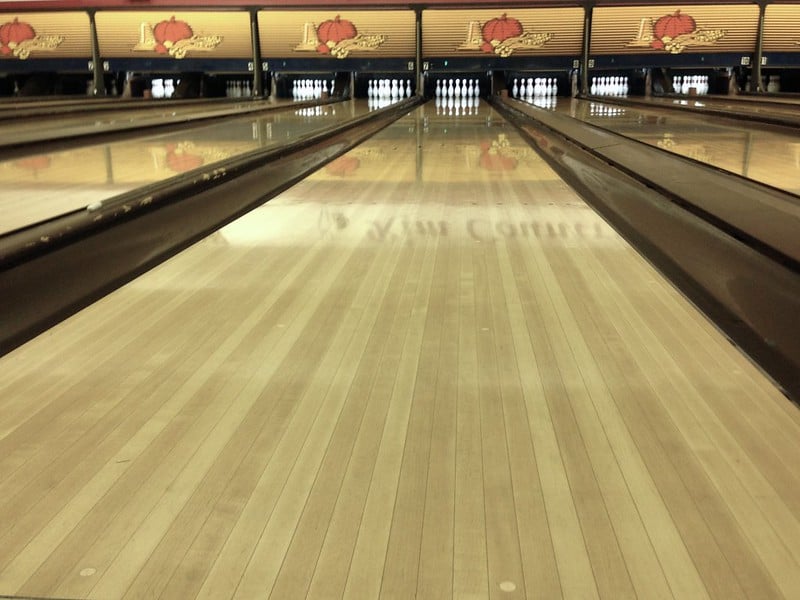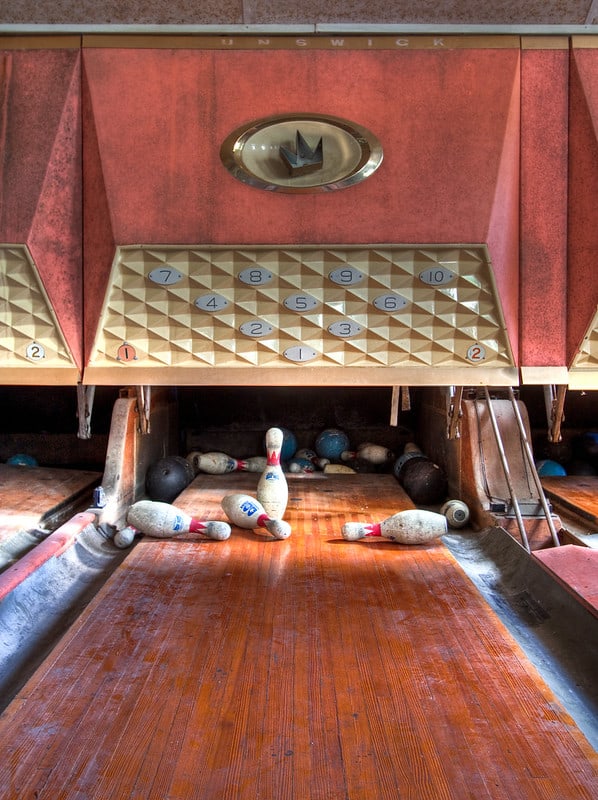Everyone who loves their sport knows that every time you play, you have to be in it for 100%. In bowling, we make sure that our technique is fine-tuned and that we always choose the best equipment we can.
We have a ball for the first shot of the frame, a spare ball, and maybe even a hook ball. Whether we own the latest $250.00 state-of-the-art shoes or rent a reliable old pair form the bowling alley, we know that bowling shoes give us an edge as well. Unfortunately…or fortunately, as the case may be, there is one thing at the bowling alley that you don’t have complete control over; and that is the lane itself.

Lanes are like snowflakes…
Just like snowflakes, you’ll never find two lanes that are exactly alike. We spend most of our game figuring out and overcoming those differences, whether we realize it or not. But what makes the lanes different?
No two bowling lanes are the same due to the travel path every bowling ball takes as it rolls down the lane. Every bowler throws different, every bowling ball lands on a different spot before it starts its roll.
Where do you bowl? Older lanes, like older homes, have “character.” They’ll develop wear marks and divots, and if not refinished on a regular basis, will definitely cause your ball to make some unexpected moves. If the lane is damaged, it can interfere with the trajectory of your ball in a major way.
Many bowling alleys are choosing to simply cover their old, hardwood floors with a synthetic material that looks like wood instead of replacing them completely. The softer surface over worn wooden boards can impact on your ball’s performance.
The brand new bowling alleys have fully synthetic surfaces on their lanes. While they look the same as wood, they are smoother and slipperier. If you’re used to bowling on an old hardwood lane, it might take some practice to get used to the new surface.
Oil helps the ball go ‘round…
Bowling alleys use thin coats of oil to help preserve the playing surface of the lanes. The oil is applied in one of many patterns, each pattern affecting the ball in a different manner.
Sometimes the bowling alley attendant might be a little too heavy on the oil, causing the balls to slip and slide instead of grabbing hold and rolling. Too little oil, whether by overuse of the lane between oilings or too little application of oil, can cause your ball to grab hold too early and use up all its power before it reaches the back end.
Because of the imperfections in the oil-application process, even lanes within the same bowling alley will be different. The same lane will be different in the evening than when it was freshly oiled in the morning, too.
So, my “lucky” lane is not all in my head?
Chances are, your “lucky” lane is special to you because of the way its imperfections compliment your own unique bowling style. There are many reasons why no two lanes bowl the same way. Get friendly with the workers at your bowling alley, and they will be able to tell you the best lanes to bowl. They can also tell you about how the oil is applied and the best techniques to use on that particular oil pattern. Lanes that are played on more often are likely to have less, or dried out oil and should be avoided.
Of course…the easiest way to figure out what your bowling conditions are is to take advantage of the practice round before the scoring starts! With a little know how, you can make any lane your “lucky” lane.

